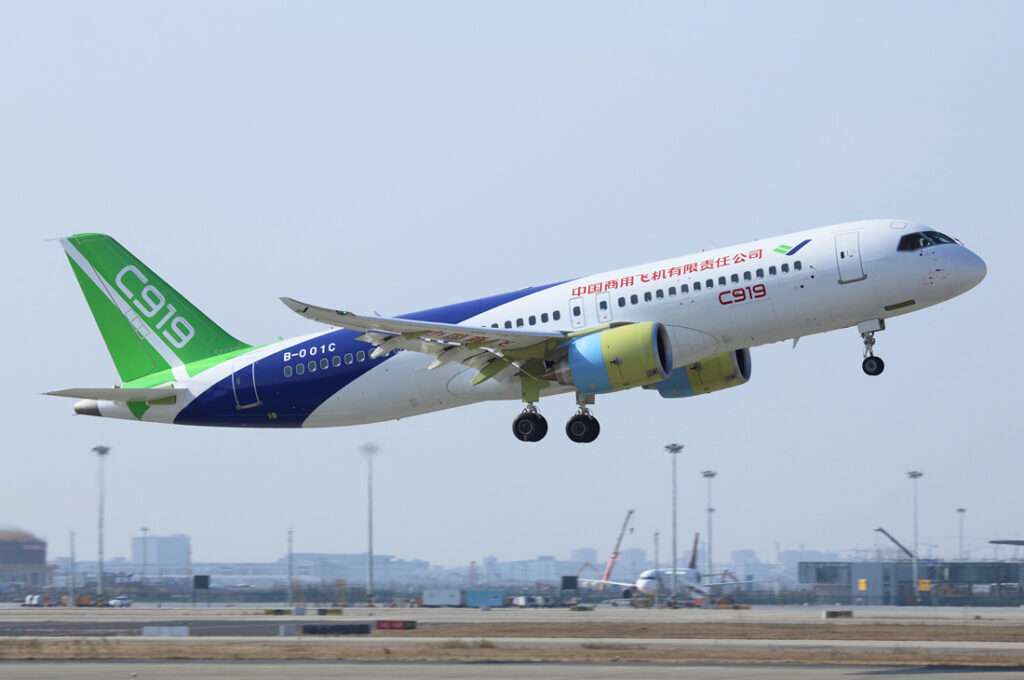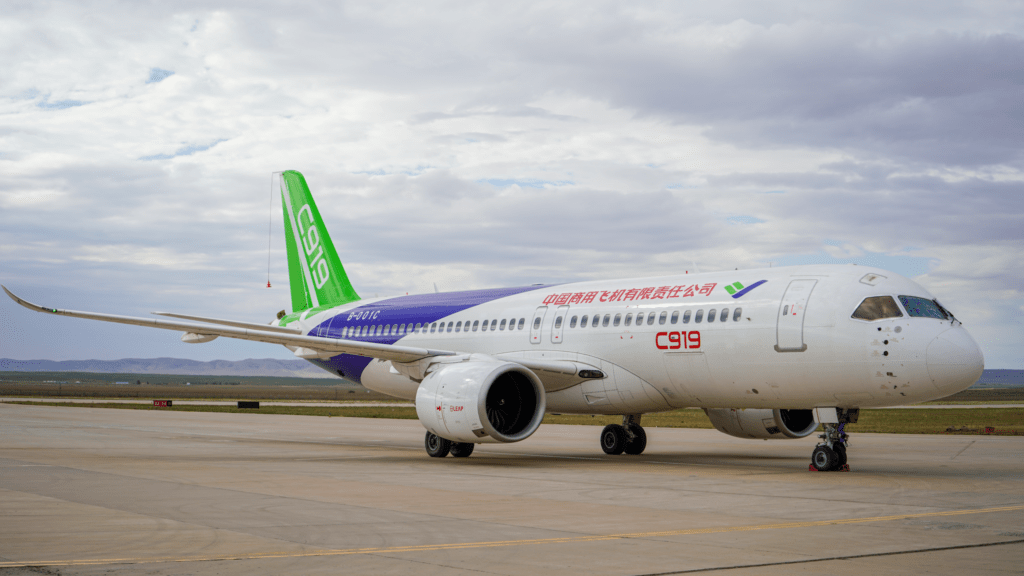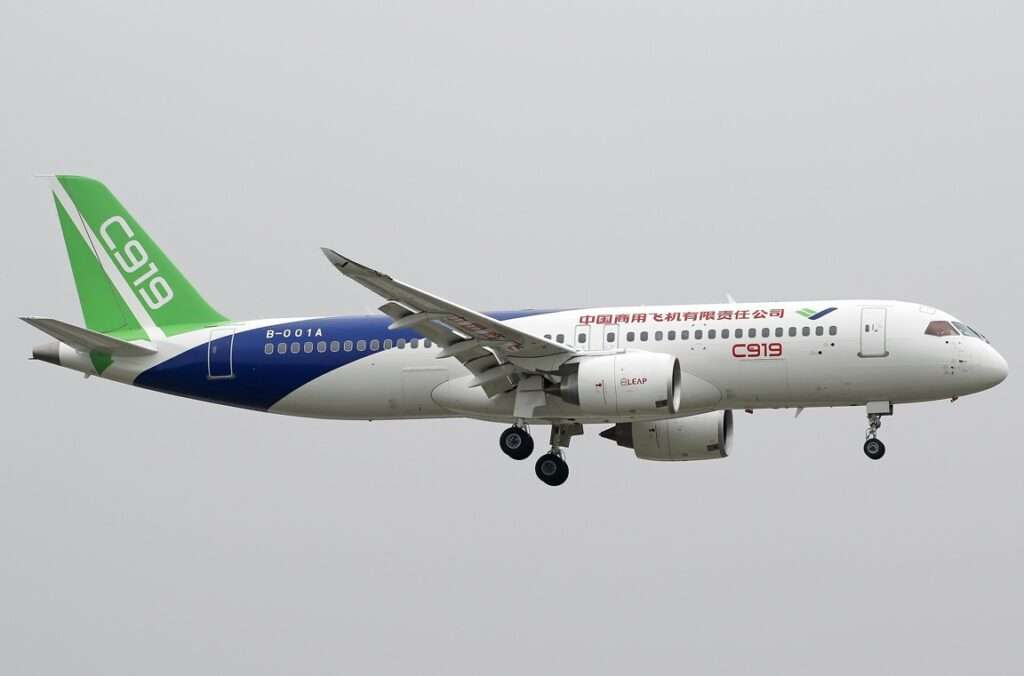Why is the COMAC C919 only doing domestic flights? AviationSource guest writer Vance Hildeman delves into this further.
The C919 plane from the Chinese aircraft manufacturer COMAC is a historic development that threatens to upend the near-duopoly held by Boeing and Airbus in the world of commercial flight.
Or at least, that’s true in theory. At the moment, the plane has yet to make a single international flight, and I believe it will be some time before that happens. Here’s what you need to know about the C919 and its current limitations.
Why isn’t the COMAC C919 certified internationally?

[monsterinsights_popular_posts_inline]
The C919 recently made history by performing the first commercial flight of a Chinese-made large passenger jet, putting it in direct competition with the Boeing 737 and Airbus A320.
At the moment, the jet is flying domestically and has brought passengers from Shanghai to Beijing.
But unlike the Boeing and Airbus planes, there’s no sign that the C919 will be flying internationally any time soon.
There are a couple of very good reasons for that. For one, COMAC is focusing on domestic supply and demand first.
Its manufacturing capabilities aren’t yet up to the task of supplying all the demand for planes and flights on a domestic basis, let alone competing on an international level with manufacturing giants like Boeing and Airbus.
Beyond that, it might not be in COMAC’s best interest to have the plane fly internationally until it’s been tested more thoroughly for domestic flights.
There’s no point in trying to upend a duopoly if there is any risk of a much longer flight resulting in a plane crash that might shake trust not only in the state-run manufacturer, but also the government behind it.
A domestic crash would be less noteworthy, but could invoke greater international scrutiny of compliance to mandatory safety standards such as SAE ARP4754A which the C919 must adhere to.
And finally, the C919 needs other domestic and international aviation authorities besides just the Civil Aviation Administration of China (CAAC) to certify it first; for example, the FAA in the U.S. and the EASA in Europe, and so on.
When will the FAA and EASA certify the C919?

Which leads directly to the question, when will other aviation authorities approve the C919? The short answer is that no one really knows.
If it’s true that as much as 40 percent of the planes’ components are imported or perhaps even higher, it seems likely that many components have already been designed with international certifications in mind and could easily comply with international standards.
It’s also worth noting that there are very few differences between the Chinese certification authority’s guidelines and the FAA’s, so it seems like the road to certification should be relatively simple.
On the other hand, certification for new airplane designs is always slow, and international competition between aircraft developers and manufacturers could contribute to delays in the process.
It may also be that the FAA and the EASA simply don’t want the Chinese-made craft flying in their skies just yet until after more proven success flying domestically within China.
But I think it’s far more likely that the delays are mostly due to hesitation on the part of COMAC to have their plane tested in the international commercial flight environment at the moment.
Final thoughts

While no one can predict the exact timeline, it’s reasonable to expect that the C919 will eventually enter international skies.
There’s a lot that needs to take place before that can happen, however, but the COMAC C919 will truly usher in a brave new world of competition.
It should be noted that COMAC is half government-owned thus able to be quite ‘flexible’ in terms of setting aircraft selling prices Boeing and Airbus have never had to encounter a similar competitor.

Click the banner to subscribe to our weekly newsleter.
Editor’s Note…

This article was produced by Vance Hilderman. Mr. Vance Hilderman, is the principal founder/CTO of three of the world’s most significant aviation development/certification companies including TekSci, HighRely, and AFuzion.
Hilderman has trained over 31,000 engineers in over 700 aviation companies and 30+ countries.
His intellectual property is in use by 70% of the world’s top 300 aviation and systems developers worldwide, and he has employed and personally presided over 500 of the world’s foremost aviation engineers on 300+ projects the past thirty-five years.
AFuzion’s solutions are on 90% of the aircraft developed over the past three decades. His latest book, Aviation Development Ecosystem, debuted at #1 on the Aviation category best-seller list.









